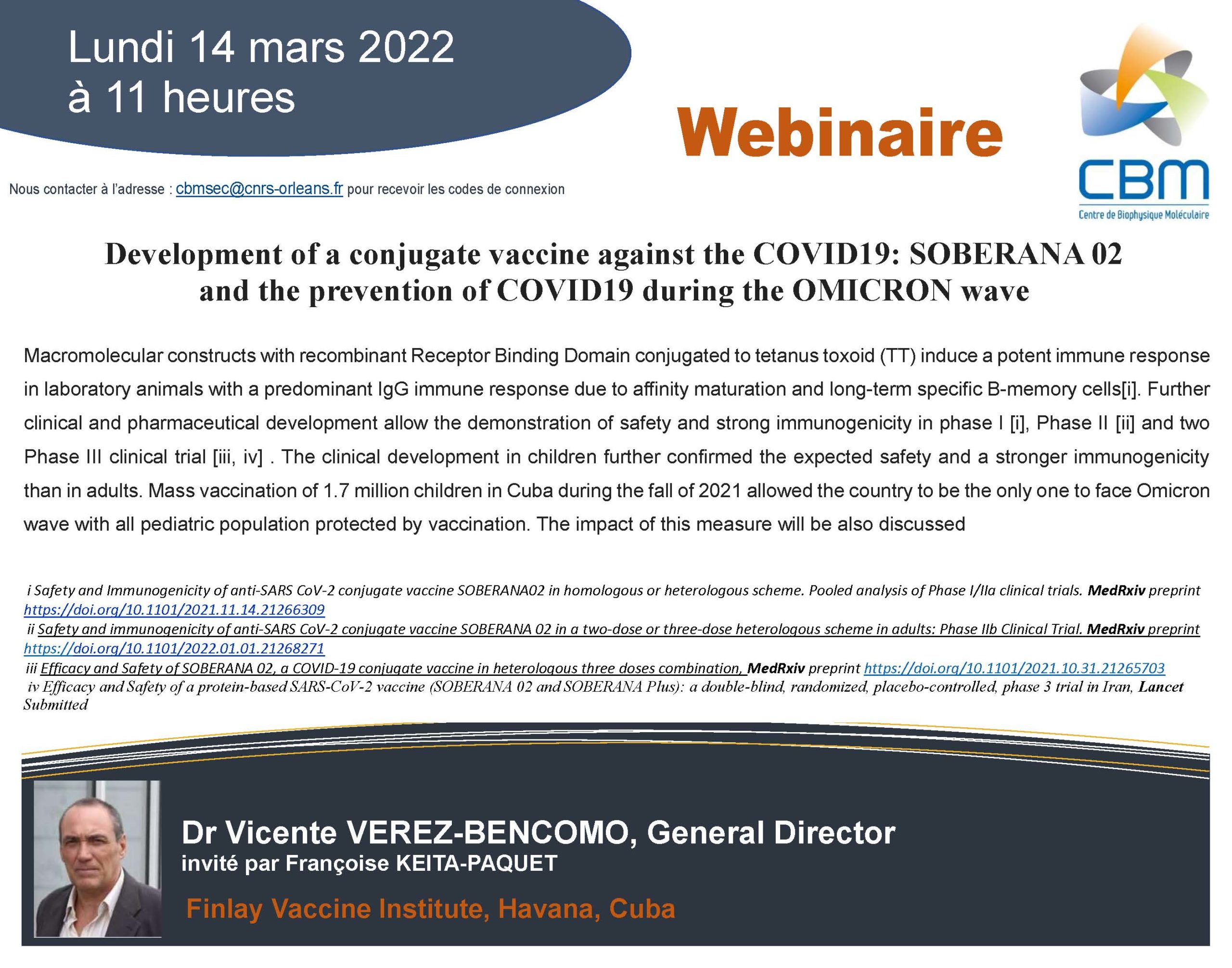Typologie d'actualités: CBM
Eva Jakab Toth, director of the CBM, received the 2020 Joseph-Achille Le Bel Grand Prix from the Société Chimique de France

| The Société Chimique de France awarded the Joseph-Achille Le Bel Grand Prix to Eva Jakab-Toth during the 2019 and 2020 Grand Prix Awards Days which took place on October 5 and 6, 2021 in Clermont-Ferrand.
The Joseph-Achille Le Bel Grand Prize rewards internationally recognized work that forms part of the activities of the SCF. |
A new luminescence for the direct follow-up of drug delivery
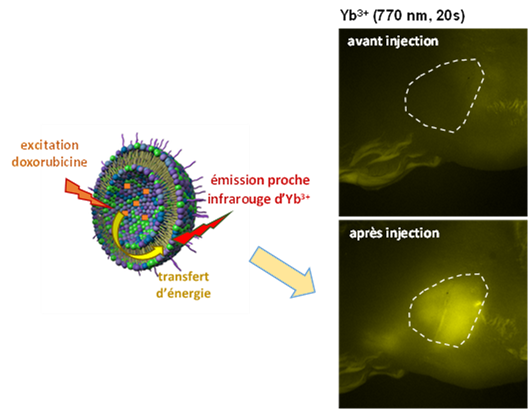
Liposomes are nanocapsules widely used for the in vivo transport and delivery of therapeutic or diagnostic agents, or both. The therapeutic agent will only become active upon its release, thus sparing healthy tissues. The follow up of such release process is crucial to understand and control the drug action.
The previously reported approaches are based on optical imaging, using exclusively organic fluorophores or inorganic nanoparticles, co-encapsulated with the drug in the liposome.
The use of luminescent lanthanide complexes is an alternative which offers a number of advantages, including the capacity of those complexes to emit in the near infrared (NIR) region, enabling their detection in biological media.
The CBM research teams have developed an original nanocapsule : a liposome comprising an Ytterbium complex encapsulated with doxorubicin (anticancer agent). The NIR emission of the lanthanide complex is only observed when the drug is encapsulated. This NIR luminescence signal can therefore enable the direct follow-up, and in real time, of the integrity of the liposome, and can thus be used to detect the drug release.
An in vivo proof of concept was performed and the lanthanide luminescent signal could be detected in a mouse model of breast cancer.
Références de l'article :
Doxorubicin-sensitized Luminescence of NIR-emitting Ytterbium Liposomes: Towards Direct Monitoring of Drug Release,
Sara Lacerda, Anthony Delalande, Svetlana V. Eliseeva, Agnès Pallier, Célia S. Bonnet, Frédéric Szeremeta, Sandra Même, Chantal Pichon, Stéphane Petoud, Eva Toth
Angewandte Chemie Int. Ed. 13 août 2021 https://doi.org/10.1002/anie.202109408
See the news on CNRS Chemistry Institute site
New methodological breakthrough in total protein synthesis
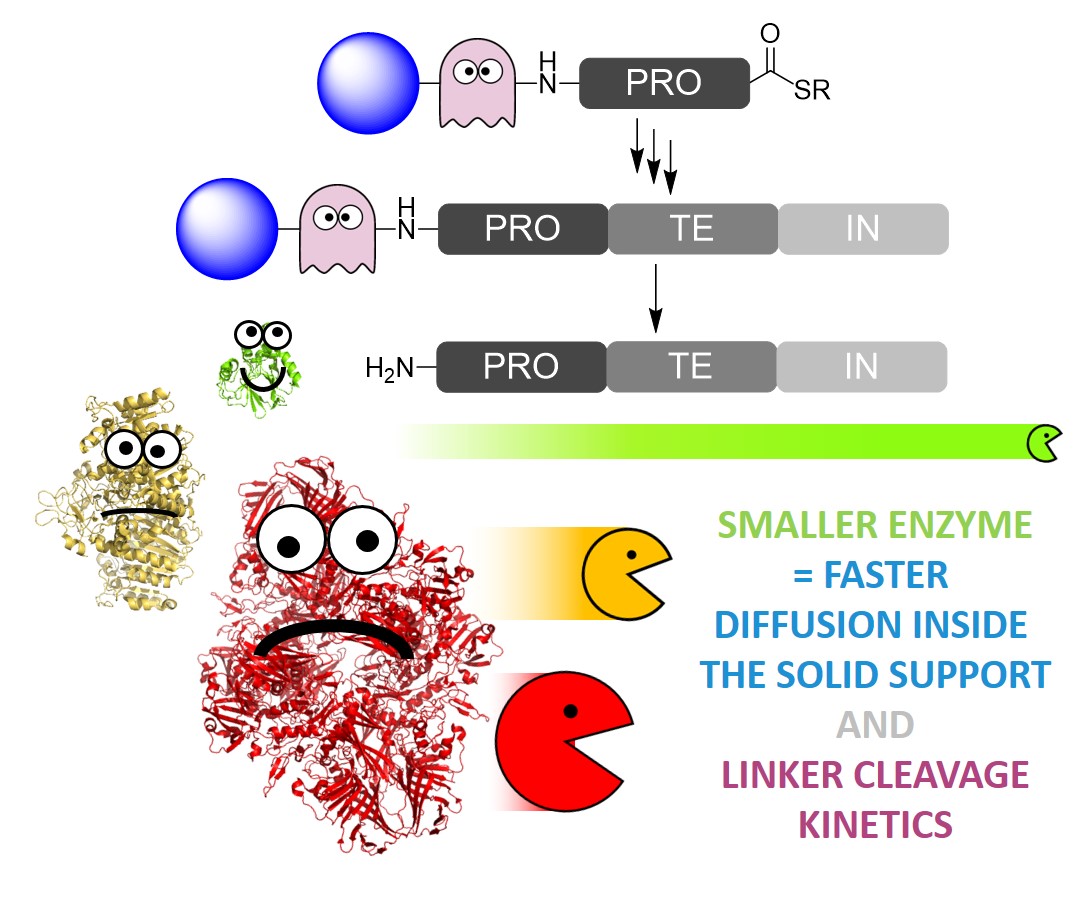
Since the first synthesis of an amino acid dimer in the late 19th century, synthetic proteins represented a fascinating goal for generations of chemists. Invented in the 1960s, the solid phase peptide synthesis (SPPS) technology is since used routinely for peptides made up of a few dozen amino acids. The discovery of "chemical ligation" reactions in the 1990s paved the way to the synthesis of proteins of more than one hundred amino acids: extremely selective chemical reactions are used under aqueous conditions to couple peptide segments - themselves synthesized by SPPS -, devoted of side chain protective groups usually required in organic synthesis. Thanks to these methodological breackthroughs, the chemical approach to protein synthesis today advantageously complements biotechnological methods and enable the generation of native or modified proteins, tailor-made tools for deciphering biological processes at atomic resolution.
However, the synthesis of proteins of several hundred amino acids requires numerous successive chemical ligations, and therefore particularly delicate stages of purification of the reaction intermediates. One solution to overcome these steps is to assemble the proteins onto a solid support. Although very attractive, this approach has been limited to proofs of concept: one of the main reasons is the difficulty of grafting on a suitable solid support the first peptide segment through a linker that can be easily cleaved once the ligations carried out. Indeed, the conditions required for cleaving the linkers developed so far are incompatible with many proteins.
To overcome this problem, CBM scientists, in collaboration with colleagues from IC2MP in Poitiers, explored linkers programmed to be cleaved under very mild conditions by an enzymatic reaction. Remarkably, the size of the enzyme directly correlates with the rate at which the arm is cleaved, and therefore with the efficiency of the release of the synthesized protein. The method was applied to the synthesis of a peptide of 160 amino acids, which is to date the longest sequence ever synthesized by solid phase chemical ligations.
Reference of the article : S. A. Abboud, M. Amoura, J.-B. Madinier, B. Renoux, S. Papot, V. Piller, V. Aucagne. Enzyme-cleavable linkers for protein chemical synthesis through solid-phase ligations, Angew. Chem. Int. Ed., 2021, accepted article. https://doi.org/10.1002/anie.202103768
See the news on the website of the CNRS institute of chemistry
J.-M. Bonmatin co-author of a letter in Science (July 16, 2021)
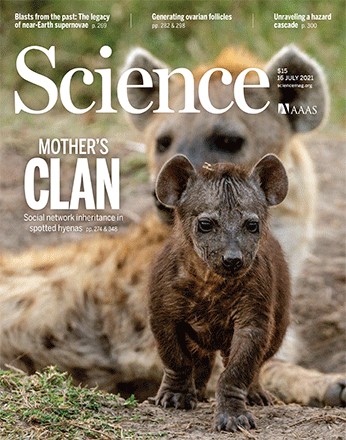
A group of co-authors, specialists in pollinators, has just published a letter in Science (Simon-Delso at al. 2021). The letter is a call to European Ministers to act responsibly and reduce toxic risks to pollinators in pesticide assessments. For example, while the natural mortality of honeybees can reach up to 5%, the scientific community agrees on a maximum "acceptable" rate of 7% for a pesticide. To accept 10% is to take a risk that is far too high in view of the already catastrophic situation regarding the collapse of pollinators. Because of the crucial importance of such decisions for the planet and our future, the authors and publisher have chosen a more direct style than usual to get their message across.
Reference : Simon-Delso N, Aebi A, Arnold G, Bonmatin JM, Hatjina F, Medrzycki P & Sgolastra F (2021) Maximize EU pollinator protection: Minimize risk, Science, 373(5552), 290. DOI: 10.1126/science.abj8116
How the hydrothermal environment of Primeval Earth may have influenced the choice of sugar in DNA and RNA
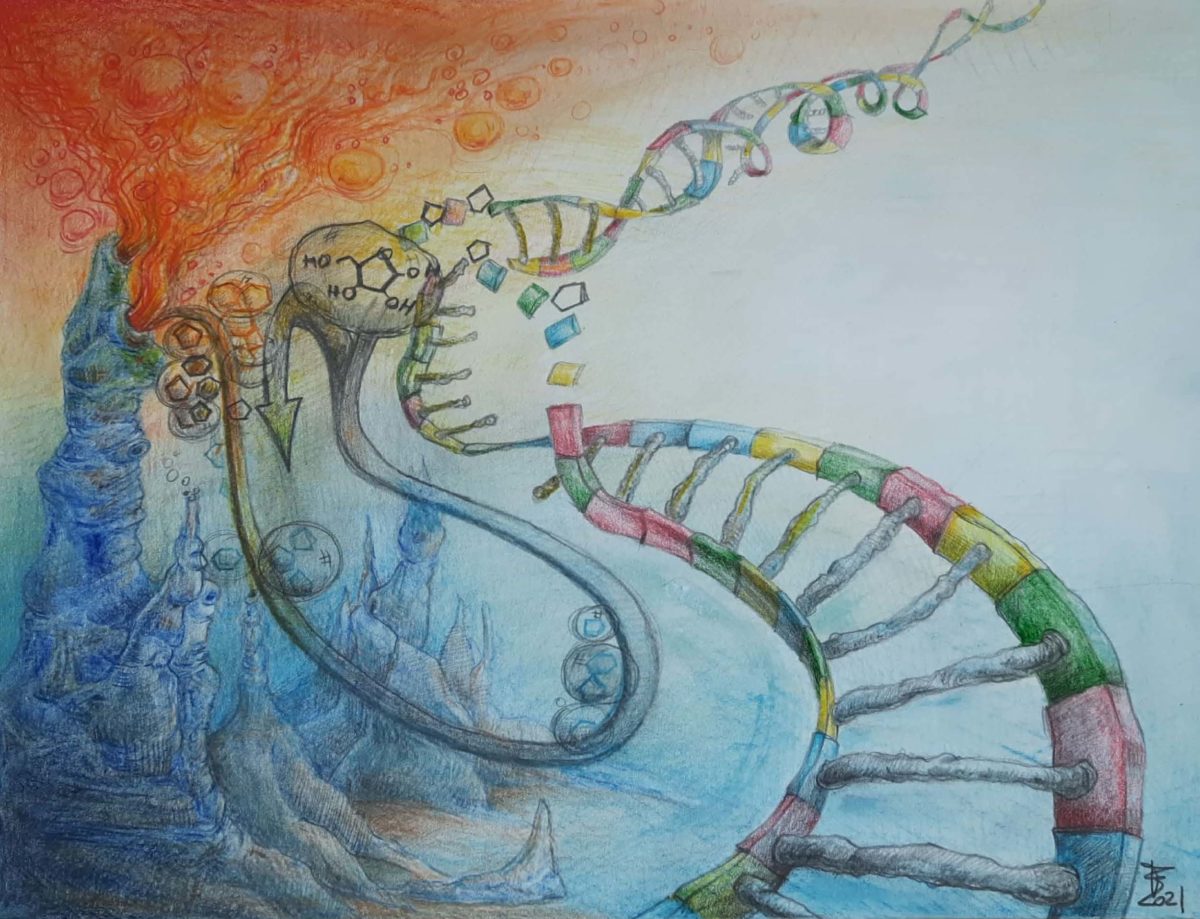
CBM scientists give answers in a publication published in the Journal Nature Communications. Why is Furanose the only sugar found in the composition of DNA and RNA while this form of sugar is not the most stable, so not the most abundant, in temperature conditions and pressure we are currently experiencing? These are the hydrothermal sources, omnipresent on the surface of the primitive land, and their complex thermal influence, which could be at the origin of this selectivity. This study conducted by scientists from the Molecular Biophysics Center, which is the subject of an article in the Nature Communications journal, should make it possible to better understand why and how molecules come together to give life in a primitive geological context.
Reference
Avinash Vicholous Dass, Thomas Georgelin, Frances Westall, Frédéric Foucher, Paolo De Los Rios, Daniel Maria Busiello, Shiling Liand & Francesco Piazza
Equilibrium and non-equilibrium furanose selection in the ribose isomerisation network
Nature Communications, 12 2749 (2021) https://www.nature.com/articles/s41467-021-22818-5
Biotechnocentre 33rd conference
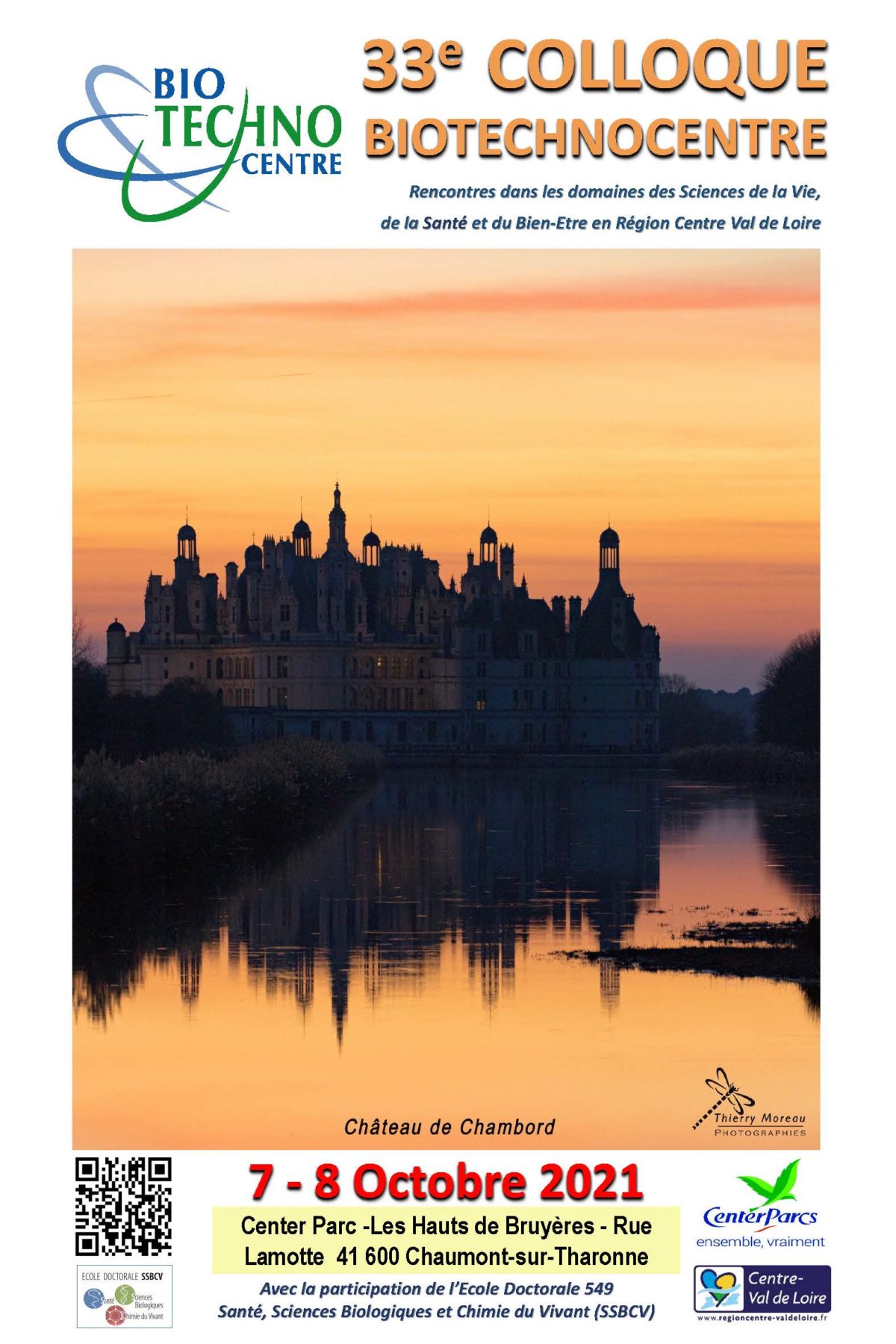
The 33rd Biotechnocentre conference will be held on October 7 and 8, 2021 at Center Parcs Domaine Les Hauts de Bruyères - Rue Lamotte - 41 600 Chaumont-sur-Tharonne.
With the participation of Doctoral School 549 "Santé, Sciences Biologiques et Chimie du Vivant" (SSBCV).
Among the speakers announced, Vincent Aucagne, head of the thematic group "Synthetic proteins and bioorthogonal chemistry" " will give a conference entitled "Methodological developments for the chemical synthesis of proteins"
Registration before September 3, 2021 at biotechnocentre@sfr.fr


